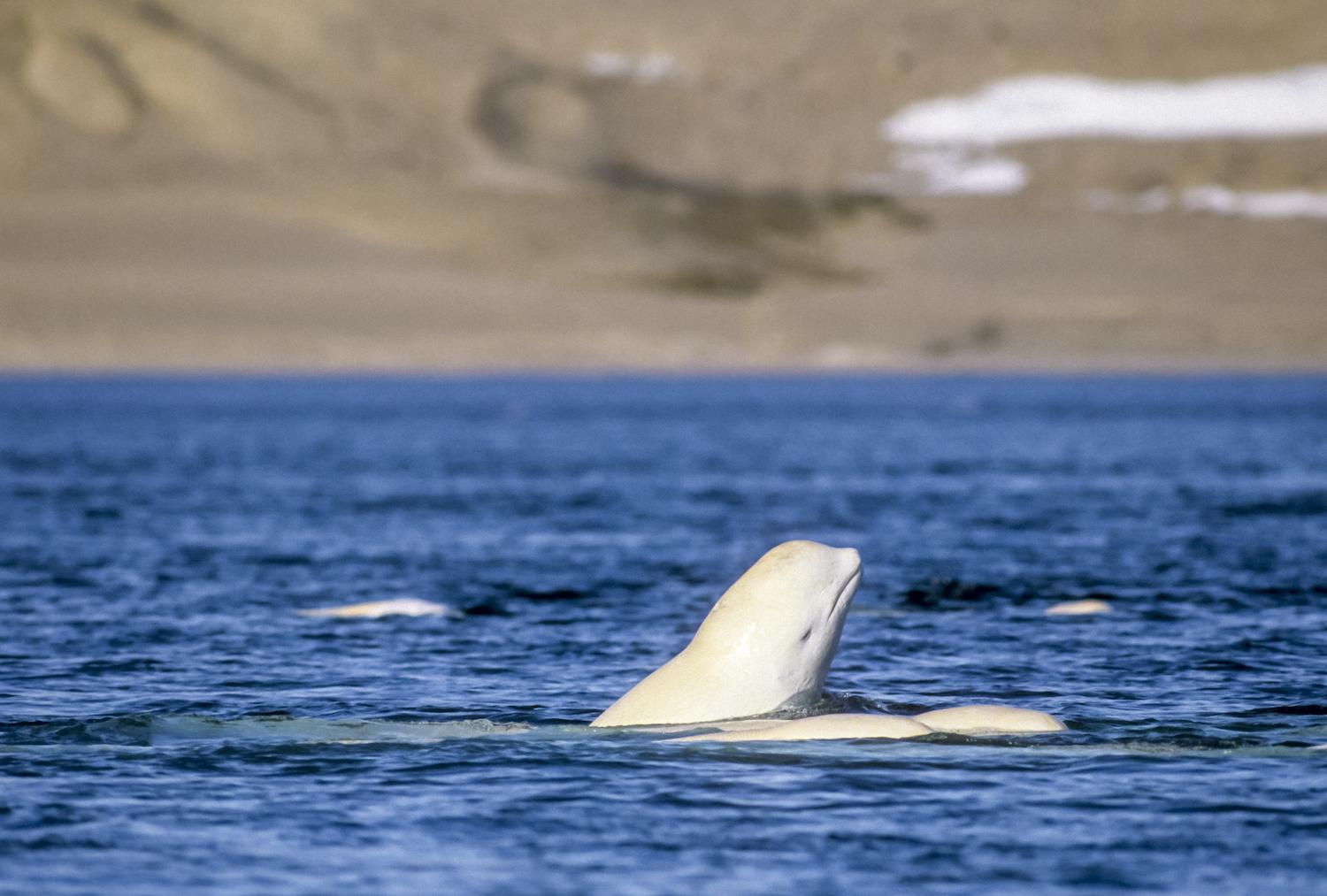
Boaters must stay at least 400 metres (1,312 feet) away from belugas in Saguenay-St. Lawrence Marine Park in Quebec/Parks Canada
Belugas Are The Protected Stars Of Saguenay-St. Lawrence Marine Park
By Maureen Littlejohn
Dressed head to toe in bright red weatherproof gear, members of our whale-watching group laughed and yelped as we hit a wave and salty spray came over the side of the Zodiac. Then we quickly got back to business. We were scanning the horizon at Saguenay–St. Lawrence Marine Park, looking for whales.
Located in Québec where the Saguenay River meets the St. Lawrence River, the park is one of the best places in the world to see the lords of the sea.
Suddenly, the woman in front of me cried out and pointed.
"Two o'clock," she shouted.
I turned my head and could just make out two small white humps breaking through the water.
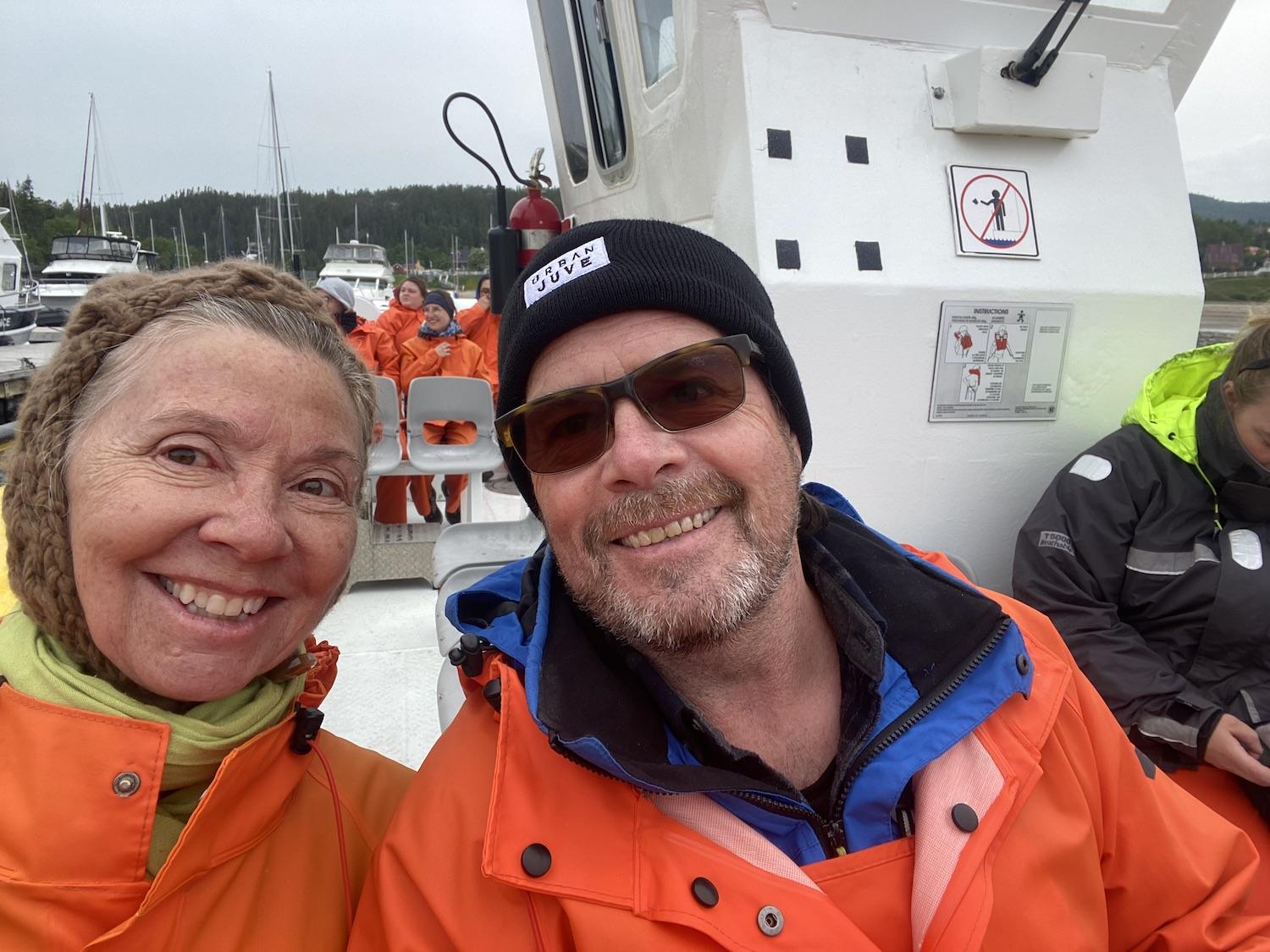
Writer Maureen Littlejohn and her husband Steve Plunkett are dressed for whale watching by Zodiac/Maureen Littlejohn
Our guide-interpreter, who sat elevated above us with the captain, came over the loudspeaker. “Those are some of the resident belugas that live year-round in this area. They are endangered, so we must keep 400 metres away and not disturb them," she said first in French, the province's official language, and then in English.
It was disappointing not to be able to get closer, but, for the whales' sake, I was glad. The captain was playing by the park's strict rules which have been evolving ever since the protected area was opened in 1998.
Although it was a bit early in the season to see other transitory whales, we were blessed to see (at a distance) more small pods of belugas. We also cruised by a rock covered with sun-bathing harbour seals who also make this region a year-round home.
I was on board a 24-passenger Zodiac operated by Croisières AML. The company offered several whale-watching tour options that departed from Tadoussac harbor, including on larger, covered ships. Most tours are two or three hours and all comply with the regulations of the marine park. There’s even a whale sighting guarantee. If the whales were a no-show, they would issue you a ticket valid for another tour to try your luck again.
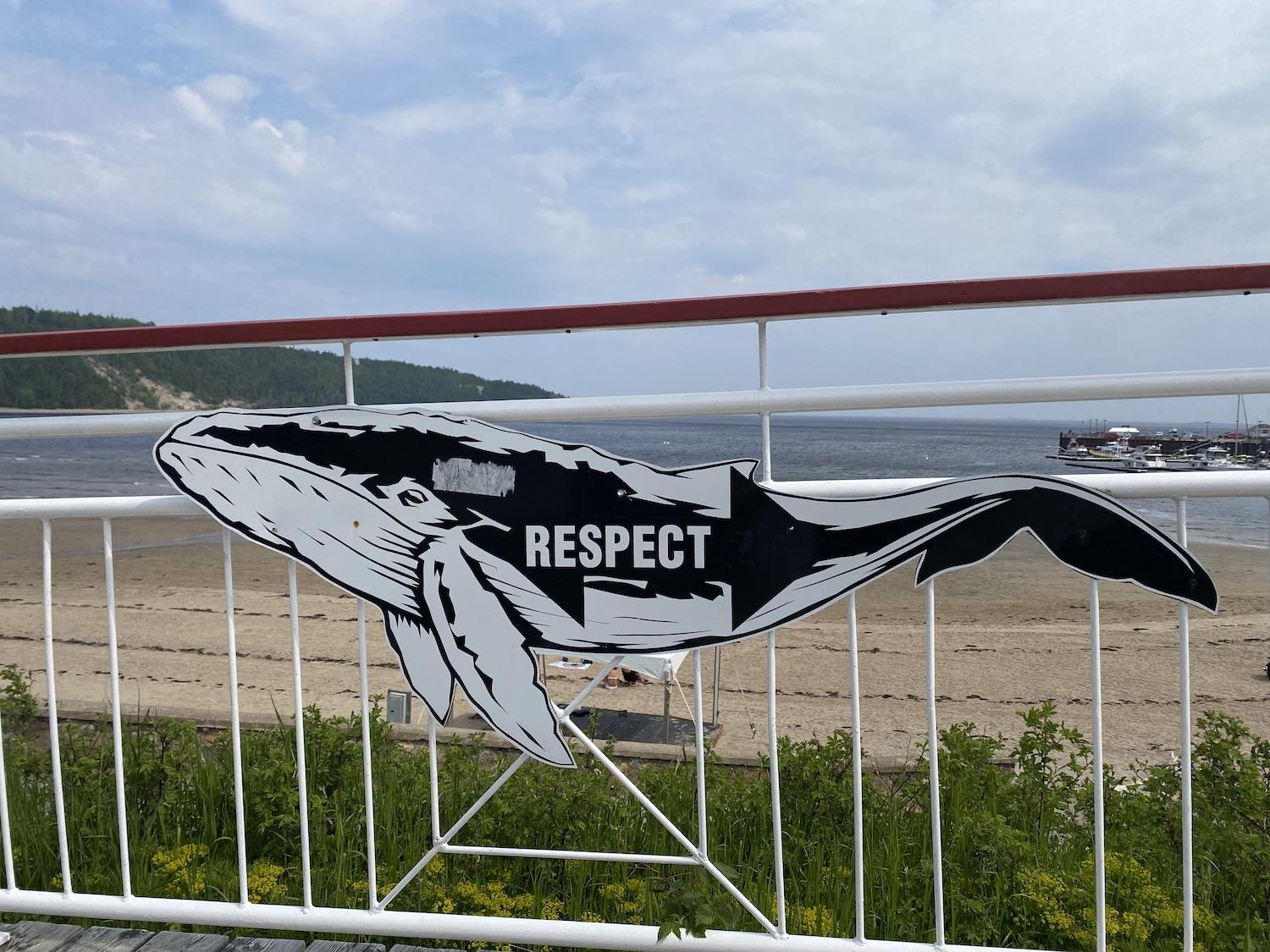
In Quebec, people are being educated about respecting whales/Maureen Littlejohn
The village of Tadoussac is located at a prime spot for sightings of marine life, at the confluence of the Saguenay and St. Lawrence rivers. Upon visiting the Marine Mammal Interpretation Centre, also in the harbor area, I learned that whales were often seen from land.
"I saw a minke whale in front of the centre this morning," confirmed Christine Stadelmann, one of the centre's two chief naturalists.
The site was a gold mine of marine information. Touching the centre’s many whale skeletons was encouraged and exhibits were dedicated to educating the public about the species that frequent the park and the challenges of protecting them.
"There are 12 types of whales that come here to feed seasonally including minke, humpback, fin, right and even blue whales,” explained Stadelmann. “The undercurrents make it a very nutritious place."
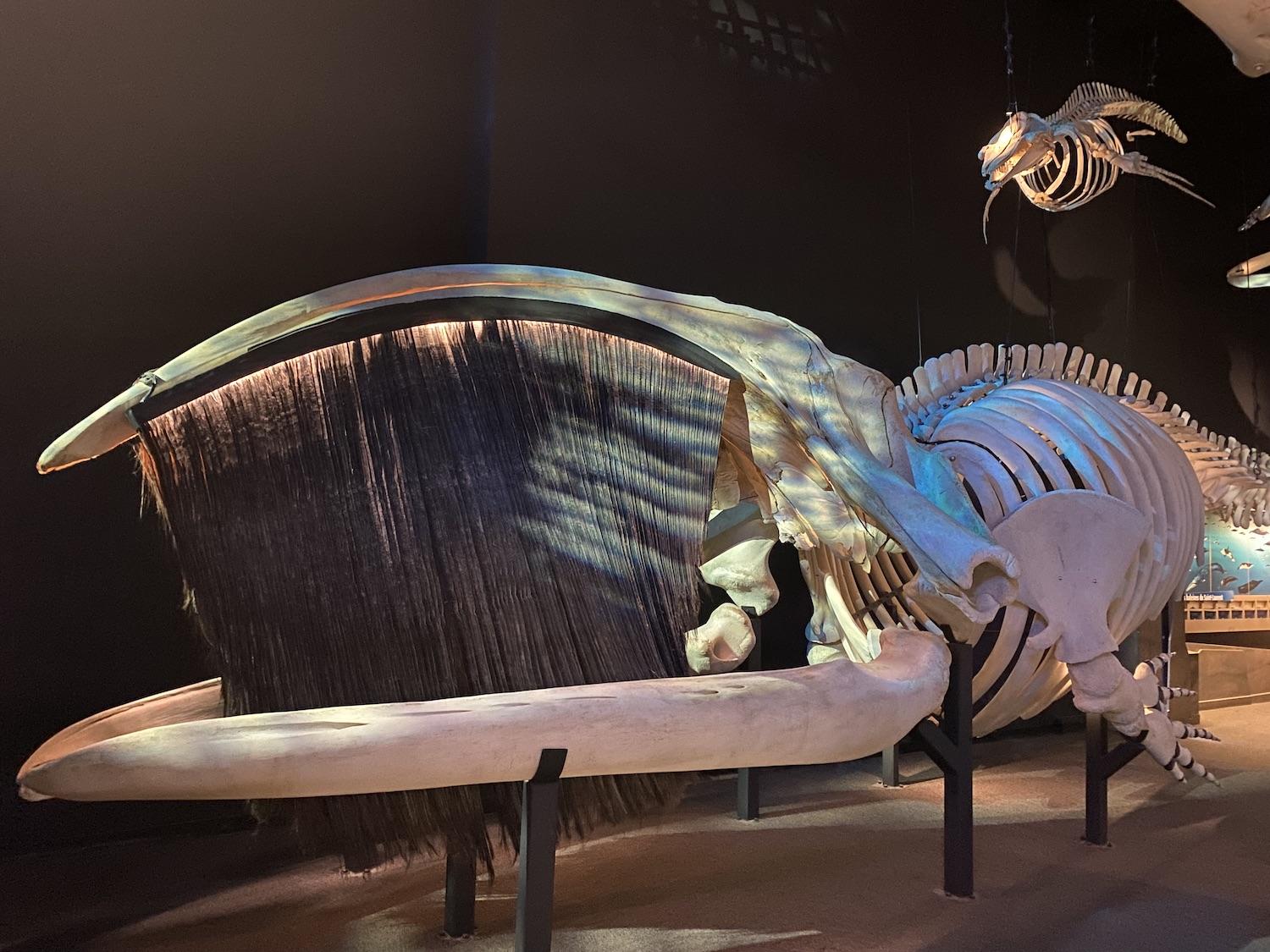
A right whale skeleton at the Marine Mammal Interpretation Centre in Tadoussac, Quebec/Maureen Littlejohn
From early June to late October, whales, seals and seabirds travel thousands of miles to get their fill. Why is this area such a bountiful feeding ground? Small fish and krill are brought into the St. Lawrence’s deep channel by the tides and are then trapped when the current meets the outgoing waters of the Saguenay River. They are easy pickings for creatures further up the food chain.
Belugas, year-round residents, are the stars of the show in the marine park. While other species come in to feed and then depart for warmer waters to give birth, belugas have their babies here.
Concerns about their dwindling numbers in this area — estimates were under 900 at one time — led to the creation of the Saguenay–St. Lawrence Marine Park in 1998. In a unique collaboration, it is jointly managed by the federally run Parks Canada and Sépaq, (Société des établissements de plein air du Québec') Québec's provincial parks agency.
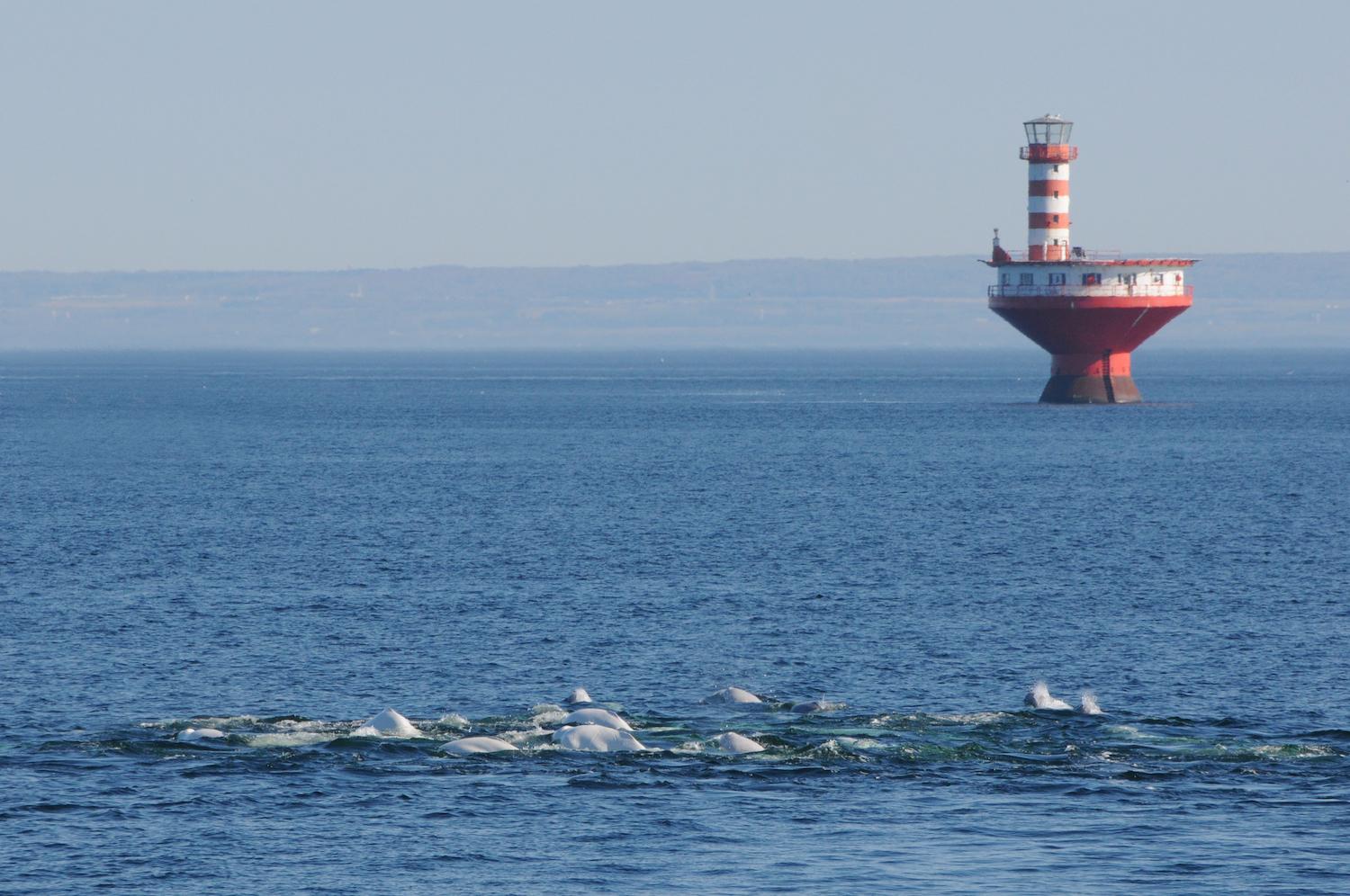
A pod of belugas in Saguenay-St. Lawrence Marine Park in Quebec/Parks Canada, Renaud Pintiaux
Covering 1,245 square kilometers (480 square miles), the park starts along the north shore of the St. Lawrence at Gros cap a l'Aigle near Saint-Fidele and continues upriver to Les Escoumins. From where the Saguenay River enters the St. Lawrence at Tadoussac, it also covers the Saguenay Fjord for 87 kilometres (54 miles) to Cap a l'Est, just past Sainte-Rose-du-Nord.
Part of the Parks Canada marine research occurs from five land-based observation points. Pointe-Noire Interpretation and Observation Centre overlooks the mouth of the Saguenay River. Scientists monitor activity by counting boats and whales and observing their interaction with high-powered binoculars.
That's where I met up with Cristiane Albuquerque, a Parks Canada ecosystem scientist who has been studying whales since 1998.
“The entire beluga population in this region, including beyond this park, is around 1,500 to 2,200,” she explained. “This protected area is around 40 percent of their habitat. The remaining 60 percent is beyond park boundaries, further out into the St. Lawrence.”
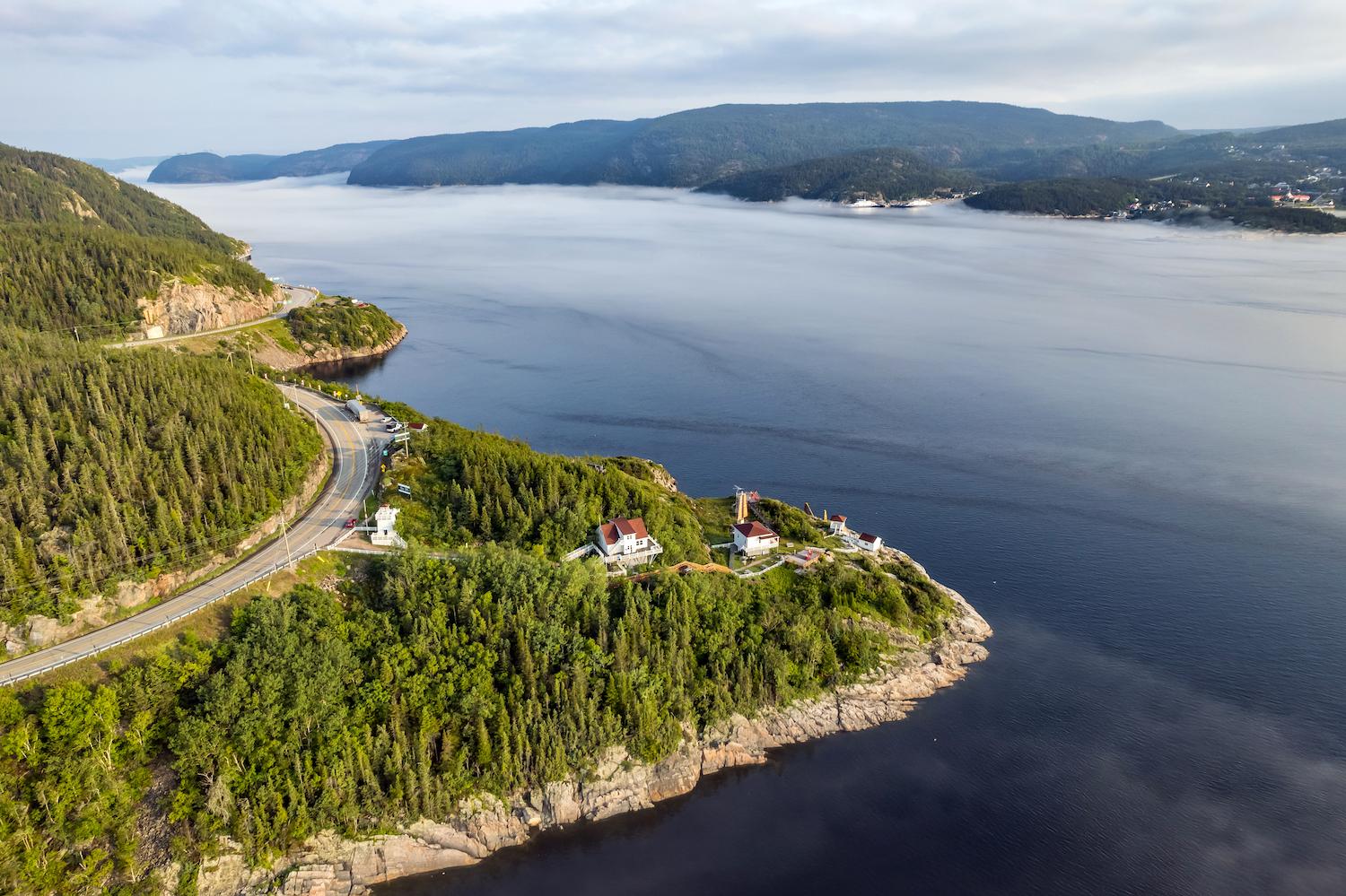
Parks Canada does marine research from five land-based sites, including Pointe-Noire Interpretation and Observation Centre/Parks Canada, Mathieu Dupuis
One of the smallest whale species, adult belugas are between 12 and 15 feet long and can weigh between one and two tons. A brownish-grey color at birth, belugas become white between ages 10 and 12 and live up to 60 or 70 years.
An Arctic species, the majority of the world’s population lives in polar waters. The “canaries of the sea,” known for their chatty vocalizations, arrived in the St. Lawrence around 7,000 years ago after the icecap had melted and the earth's crust had partially rebounded.
Up until the end of the 19th century, the population was between 8,000 and 10,000. Sadly, because fishermen thought they were the reason the cod stocks were being depleted, they were almost hunted to extinction. Scientific research has since proven that their diet contains only smaller fish and bottom dwellers such as clams.
Although whaling was banned in 1979, the beluga population remains in a precarious position.
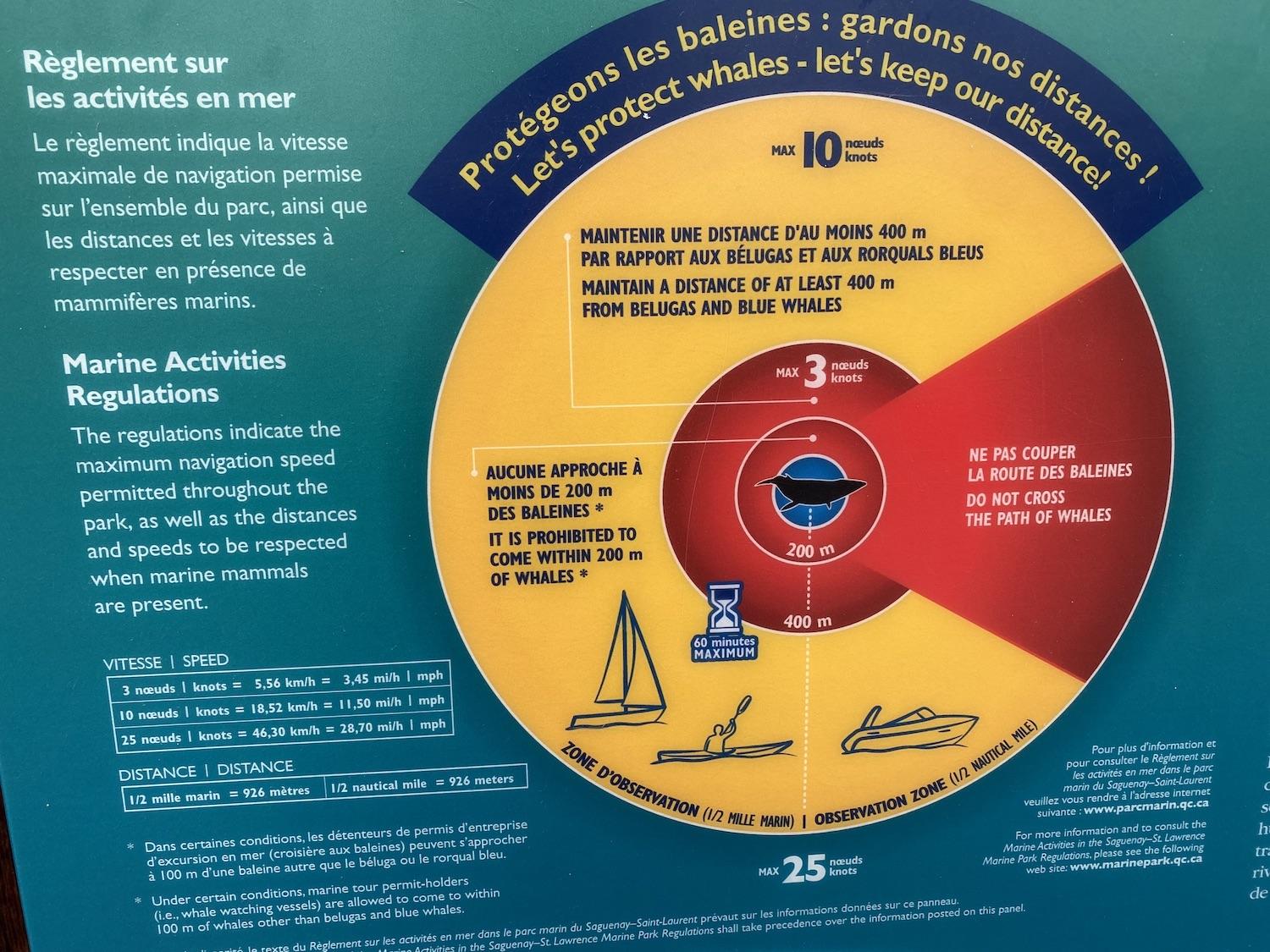
A variety of regulations help protect whales in Canada/Maureen Littlejohn
To address the situation, increased marine park regulations have come into force. As of 2002, boats were not allowed to stop and watch the belugas. Speed reduction to between five and 10 knots was added in 2017, and vessels were warned to slowly move away if a beluga whale came near.
Boaters must stay at least 400 metres (1,312 feet) away from belugas and blue whales, both of which are classified as species at risk. For other species, the distance is 100 to 200 metres (330 to 660 feet) away.
The most recent regulations came in 2018, banning all boats and watercraft from the mouth of Baie-Sainte-Marguerite on the Saguenay River where beluga mothers go to give birth and raise their calves.
“Before, in Baie-Sainte-Marguerite, the belugas would leave when boats came in, or they would alter their behavior, always being alert to the vessels,” said Albuquerque. “Because of that, they were not breastfeeding their babies and teaching them to socialize."
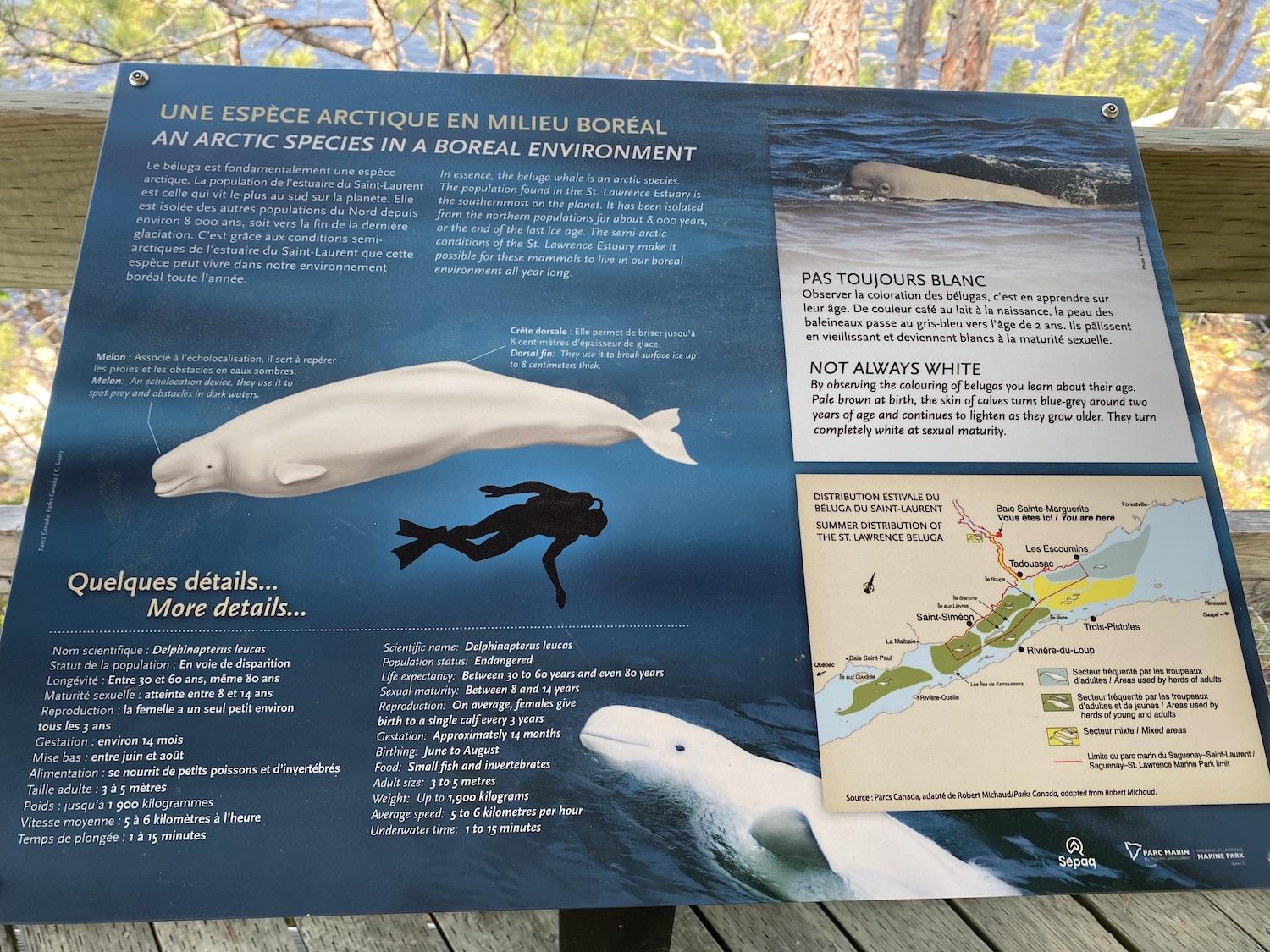
Interpretive signs help people get to know belugas/Maureen Littlejohn
Belugas are social creatures and travel in groups. Albuquerque has seen mothers and calves in pods of 10 and groups as large as 100. One socializing behavior, in particular, captured her attention in Baie-Sainte-Marguerite. "Five belugas will float in a circle with their heads together. Then they poke their heads up and look around. It is called spy-hopping. When they look up, they are able to change the shape of their head. It's like you can see the brain moving around.”
She said it's too early to say how the new regulations are impacting birth and mortality rates for the whales, but there has been a positive buy-in from the public. "When I was here in 2016, 40 percent of the bay was filled with boats, but since the closure, they don’t come in, don't stop, and keep their distance."
To learn more about the regulations, I connected with Chloé Bonnette, partnership manager for the park. We met at the Beluga Interpretation Centre at the Baie-Sainte-Marguerite sector of the Parc national du Fjord-du-Saguenay, a land-based beluga whale-watching site operated by Sépaq.
She told me commercial whale-watching companies are issued permits by Parks Canada and captains must complete training on how to navigate the marine park’s waters. “They can't specifically advertise beluga whale watching,” she said. If you see these snow-white creatures on a tour, you are lucky.
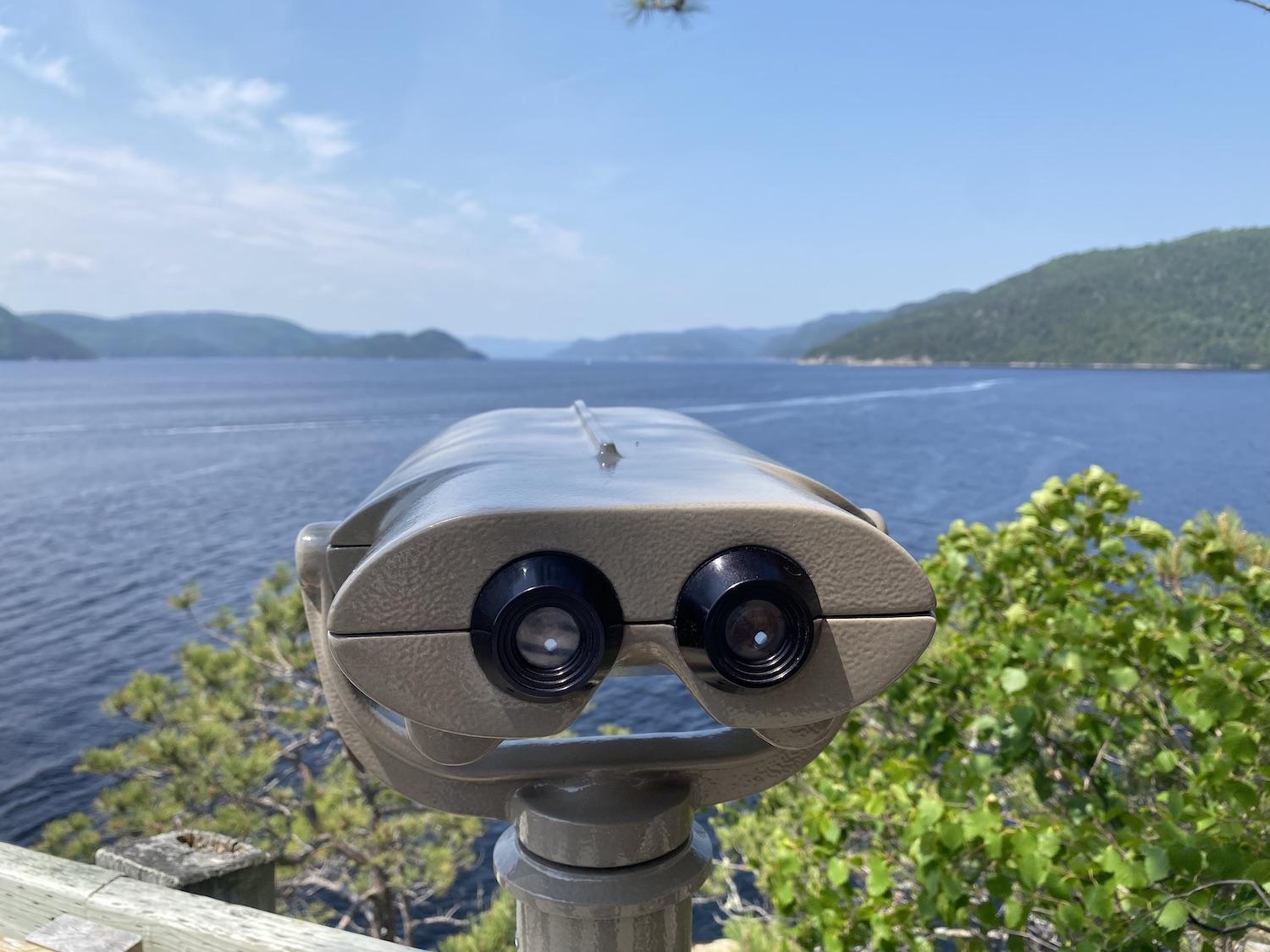
Land-based whale watching is always an option/Maureen Littlejohn
For the last few years, a program dedicated to awareness has sent teams of park representatives to engage boaters at marinas and on water in the region, telling them about the new regulations and why they need to be followed.
The marine park website has also introduced a new training course called Navigating Whale Habitat that informs boaters how to ply the waters without disturbing marine mammals. This is important because birth for belugas is tough. Gestation is 14 months, there is only one calf and mortality rates are high.
Cancer, likely due to pollutants in the water, was another challenge that contributed to declining numbers. But that seemed to have changed in recent years. Bonnette said that a symposium in May revealed that cancer has not been seen since the autopsy of a dead whale that washed ashore in 2011.
She explained that the pollutants settled on the bottom of the estuary, where the whales glean most of their food. "Since industry was banned from expelling waste into the St. Lawrence in 1988, the water has slowly been restored."
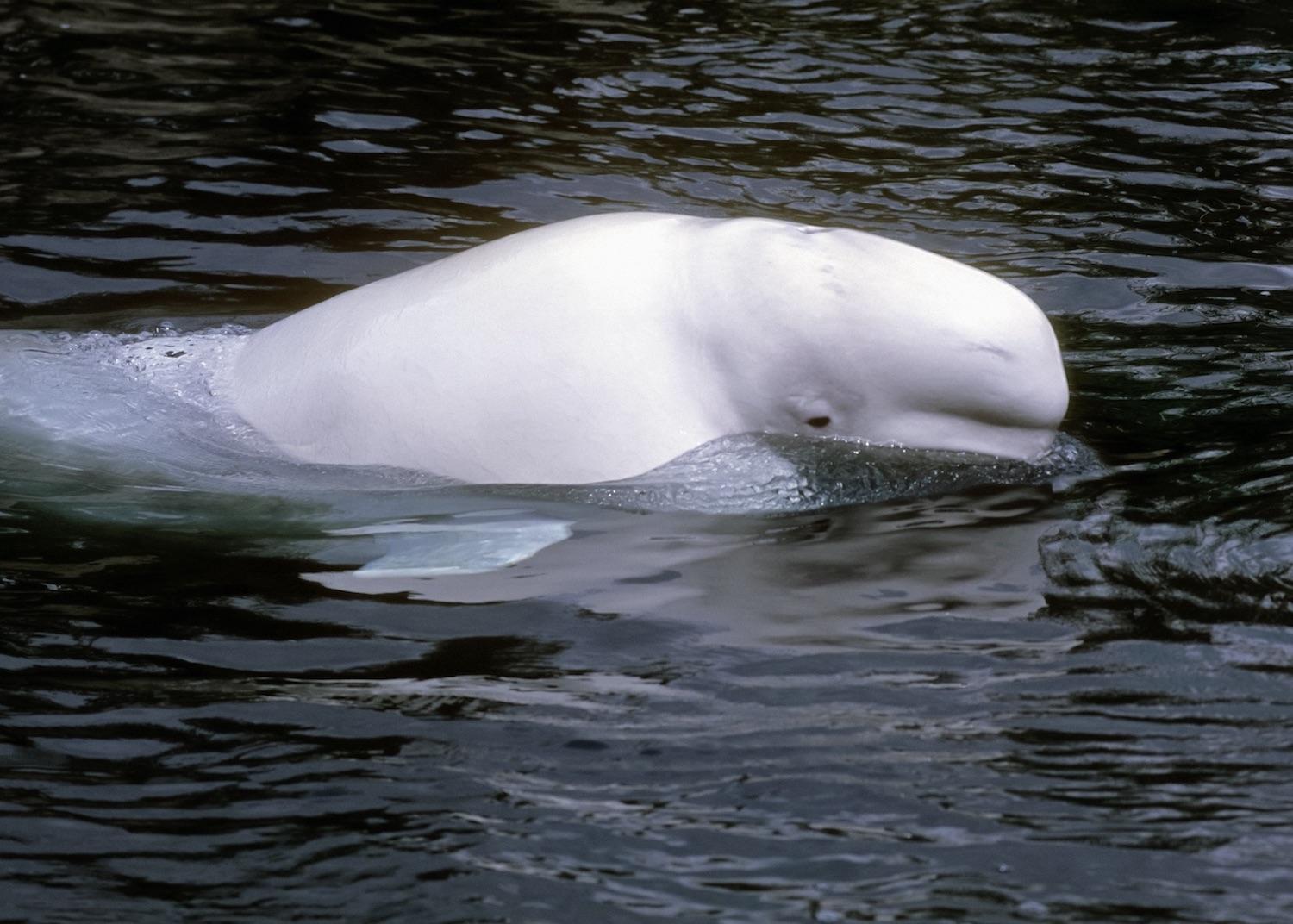
Belugas are a species at risk in Canada/Park Canada, Nelson Boisvert
Even so, the beluga population is still very much at risk. Their numbers have not been declining, but neither are they growing.
As scientists continue to monitor the whales and study their environment, the impact of the new regulations will be assessed. It will take many years to reach conclusive results but the goal is increased fecundity (fertility) and decreased mortality.
The governments of Canada and Québec announced earlier this year that they are beginning work to expand the marine park’s boundaries. Currently, perspectives are being sought from stakeholders in the project, including regional and municipal organizations, Indigenous nations, research groups and local businesses. Tourism, science and commerce all need to be considered when implementing strategies to protect St. Lawrence marine life, especially the belugas. Let’s hope the right balance is struck to safeguard these magnificent creatures and allow them to thrive.


